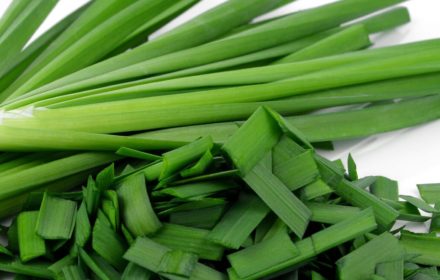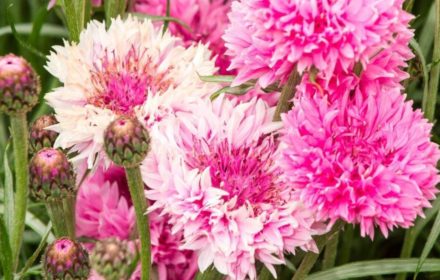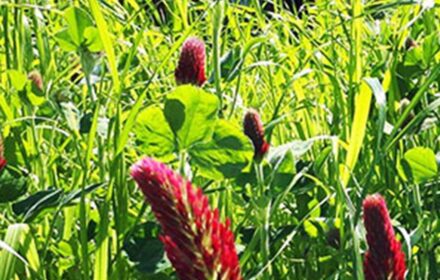How to Sow Vanilla Giant Sunflower Seeds in the UK
Vanilla giant sunflowers, also known as Vanilla Ice or Beach Sunflowers, are a striking variety with creamy white petals and dark chocolate-coloured centres. Growing to a height of 150-180 cm (5-6 feet), these prolific bloomers add height and elegance to borders, flower beds, and cutting gardens. Popular among florists for their unique appearance, vanilla sunflowers are also easy to grow, making them an excellent choice for children’s gardening projects or school activities.
When and Where to Sow Vanilla Giant Sunflower Seeds
- Indoor Sowing: Start seeds indoors from late March to mid-April to give young plants a head start before transplanting outdoors. Use pots or seed trays in a warm, sunny location.
- Outdoor Sowing: Direct sow outdoors from mid-April to late May, once the risk of frost has passed. Choose a sheltered, sunny location with well-drained soil.
Ideal Growing Conditions for Vanilla Giant Sunflowers
- Soil Requirements: Prefers light, well-drained, fertile soil enriched with compost or well-rotted manure. Avoid waterlogged or poorly drained soil, which can hinder root growth.
- Sunlight: Requires full sun for at least 6-8 hours daily to develop strong stems and vibrant blooms. Can tolerate partial shade, but flowering may be reduced.
- Temperature: Ideal germination temperature: 15-20°C (59-68°F). Young plants need protection from late frosts.
How to Sow Vanilla Giant Sunflower Seeds Indoors
- Prepare Containers: Fill pots or seed trays with fine, well-draining compost.
- Sowing Depth: Sow seeds 2.5 cm (1 inch) deep, covering them lightly with compost.
- Watering: Keep soil evenly moist but not waterlogged.
- Germination Conditions: Place containers in a bright, warm location (15-20°C), such as a windowsill or conservatory. Germination occurs within 14-21 days.
- Thinning and Transplanting: Once seedlings reach 10-15 cm (4-6 inches) tall, harden them off by gradually introducing them to outdoor conditions over 7-10 days. Transplant to final borders or containers once all risk of frost has passed.
How to Sow Vanilla Giant Sunflower Seeds Outdoors
- Soil Preparation: Loosen the soil with a fork or rake and remove weeds. Improve fertility by adding compost or well-rotted manure.
- Sowing Depth: Sow seeds 2.5 cm (1 inch) deep directly into prepared soil.
- Spacing: Space plants 30-45 cm (12-18 inches) apart to allow for full growth and strong stems.
- Watering: Water lightly after sowing, keeping the soil moist but not soggy during germination.
- Thinning Seedlings: Once seedlings appear, thin them to 30 cm (12 inches) apart, selecting the strongest plants.
Caring for Vanilla Giant Sunflowers
- Watering: Water regularly, especially during dry spells. Avoid overwatering, as sunflowers prefer moist but well-drained conditions.
- Staking: Tall plants may require staking to prevent them from toppling in strong winds.
- Feeding: Apply a balanced liquid fertiliser every few weeks during the growing season for strong stems and vibrant flowers.
- Pest Protection: Protect young seedlings from slugs and snails using barriers like copper tape or organic slug pellets.
Harvesting Vanilla Giant Sunflowers
- For Floral Displays: Cut flowers when blooms are fully open for use in bouquets and arrangements. Their creamy petals and dark centres make them a favourite among florists.
- For Edible Seeds: Allow flower heads to dry on the plant if you wish to harvest seeds. Once dried, remove seeds for roasting, cooking, or baking.
- Saving Seeds for Next Season: Collect mature seeds from dried flower heads and store them in a cool, dry place for replanting.
Common Questions About Growing Vanilla Giant Sunflowers in the UK
- How tall do vanilla giant sunflowers grow? These sunflowers typically reach 150-180 cm (5-6 feet), making them perfect for back borders or as focal plants.
- Can I grow vanilla giant sunflowers in containers? Yes, but they require large containers (at least 30 cm deep) to accommodate root growth and provide adequate support.
- Do vanilla sunflowers need full sun? Yes, they thrive in full sun, requiring at least 6-8 hours of direct sunlight daily.
- Are vanilla sunflower seeds edible? Yes, the seeds are edible and can be roasted or used in baking.
By following these steps, you can enjoy stunning Vanilla Giant Sunflowers in your UK garden, bringing elegance, height, and vibrant blooms to your outdoor space.



















